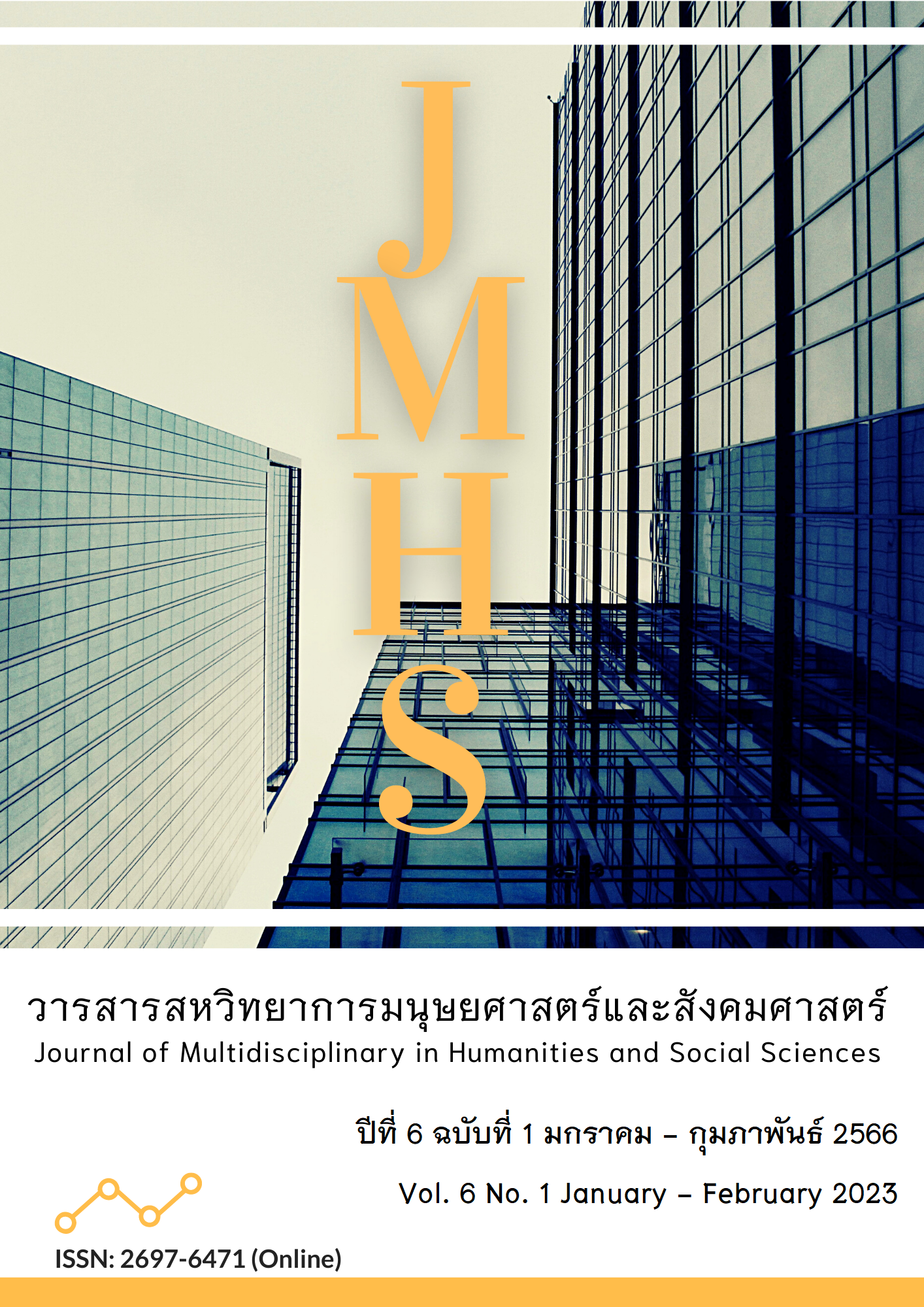รูปแบบการเพิ่มศักยภาพในการทำการเกษตรตามแนวเศรษฐกิจพอเพียง ผ่านการออกแบบกระบวนการที่ไม่ต้องทิ้งการทำเกษตรแบบเดิมและมีการจัดการพื้นที่ของเกษตรกรของชาวไร่อ้อยและไร่มันสำปะหลัง อำเภอวิเชียรบุรี จังหวัดเพชรบูรณ์
Main Article Content
บทคัดย่อ
บทความนี้มีวัตถุประสงค์เพื่อเพิ่มศักยภาพในการทำการเกษตรตามแนวเศรษฐกิจพอเพียงผ่านการออกแบบกระบวนการที่ไม่ต้องทิ้งการทำเกษตรแบบเดิมและมีการจัดการพื้นที่ของเกษตรกรของชาวไร่อ้อยและไร่มันสำปะหลังอำเภอวิเชียรบุรี จังหวัดเพชรบูรณ์ เป็นการวิจัยเชิงปฏิบัติการแบบมีส่วนร่วม จำนวน 300 ครัวเรือน โดยการคัดเลือกแบบเจาะจง ใช้การสัมภาษณ์และการสังเกตแบบมีส่วนร่วม วิเคราะห์เชิงเนื้อหาประกอบบริบทพื้นที่วิจัย แล้วเขียนบรรยายเชิงพรรณนา
ผลการวิจัยพบว่า สามารถเพิ่มศักยภาพในการทำการเกษตรด้วย “หลักสูตรเกษตรกรผู้เปลี่ยนชีวิต” ประกอบด้วยกิจกรรมการเรียนรู้ คือ 1) วังวนชีวิตในไร่อ้อยและมันสำปะหลัง เข้าใจถึงผลกระทบต่อปัจจัยการดำรงชีพ ปัจจัยการผลิต และปัจจัยพึ่งพาธรรมชาติ 2) การเข้าใจถึงผลกระทบจากการพึ่งพาปัจจัยภายนอกเพื่อการดำรงชีพ เมื่อชีวิตพึ่งพาอาหารจากภายนอก 3) สร้างอาหารในบ้านเรา สามารถวางแผนการจัดการพื้นที่บริเวณบ้านของตนเองเพื่อปลูกผักสวนครัว 4) ก้าวสู่ชีวิตแบบพอเพียง เข้าใจปรัชญาของเศรษฐกิจพอเพียงได้อย่างลึกซึ้ง สามารถนำไปปรับใช้ในการดำรงชีวิตได้อย่างเหมาะสม และ 5) ปฏิบัติการสร้างความมั่นคงทางอาหาร โดยการวิเคราะห์สภาพบริบทในปัจจุบันผ่านกระบวนการร่วมกันค้นหาปัญหา ร่วมวิเคราะห์ปัญหา ร่วมออกแบบการบวนการแก้ไขปัญหา ร่วมสร้างฉากพิมพ์การเปลี่ยนแปลง ผ่านการสร้างต้นแบบเกษตรกรผู้เปลี่ยนแปลงชีวิตจากต้นน้ำ คือ “การวางแผนและประเมินโอกาส” กลางน้ำ คือ “แบ่งรับแบ่งสู้เข้าสู่การทดลอง” และปลายน้ำ คือ ร่วมปฏิบัติจนเกิดความเปลี่ยนแปลง บนฐานคิดการสร้างต้นแบบความสำเร็จ “ลดรายจ่าย สร้างรายได้” สร้างและขยายเครือข่ายขับเคลื่อนการปรับเปลี่ยนวิถีการเกษตร มีการรวมกลุ่มทำเกษตรอินทรีย์ กลุ่มผลิตและใช้ปุ๋ยอินทรีย์
Article Details

อนุญาตภายใต้เงื่อนไข Creative Commons Attribution-NonCommercial-NoDerivatives 4.0 International License.
ทัศนะและความคิดเห็นที่ปรากฏในวารสาร ถือเป็นความรับผิดชอบของผู้เขียนบทความนั้น และไม่ถือเป็นทัศนะและความรับผิดชอบของกองบรรณาธิการ
เอกสารอ้างอิง
คณะอนุกรรมการขับเคลื่อนเศรษฐกิจพอเพียง. (2548). การสร้างขบวนการขับเคลื่อนเศรษฐกิจพอเพียง. กรุงเทพฯ: สำนักงานคณะกรรมการพัฒนการเศรษฐกิจและสังคมแห่งชาติ.
นวลน้อย ตรีรัตน์. (2551). ความมั่นคงทางอาหาร. สืบค้นเมื่อ 12 มิถุนายน 2563, จาก http://www.nidambell.net
ประเวศ วะสี. (2545). การพัฒนามนุษย์แนวใหม่เพื่ออนาคตที่ยั่งยืน. (พิมพ์ครั้งที่ 1). กรุงเทพฯ: หมอชาวบ้าน.
เรวัต ตันตยานนท์. (2558). ผู้ประกอบการธุรกิจนวัตกรรม. สืบค้นเมื่อ 26 มิถุนายน 2563, จาก https://www.bangkokbiznews.com/blog/detail/631298
วิทยากร เชียงกูล. (2527). การพัฒนาเศรษฐกิจ สังคมไทย : บทวิเคราะห์. กรุงเทพฯ: ฉับแกระ.
สภาพัฒนาเศรษฐกิจและสังคมแห่งชาติ. (2561). รายงานประจำปี 2561. กรุงเทพฯ: สำนักงานสภาพัฒนาการเศรษฐกิจและสังคมแห่งชาติ.
สุธานี มะลิพันธ์. (2552). ความมั่นคงทางอาหารของชาวลัวะบ้านป่ากำ อำเภอบ่อเกลือ จังหวัดน่าน. กรุงเทพฯ: มหาวิทยาลัยเทคโนโลยีพระจอมเกล้าธนบุรี.
สุเมธ ตันติเวชกุล. (2544). เศรษฐกิจพอเพียงตามแนวพระราชดำริใต้เบื้องพระยุคลบาท. (พิมพ์ครั้งที่ 6). กรุงเทพฯ: มติชน.
สุวจี กู๊ด และ กฤษณ์ พงศ์พิรุฬห์. (2546). “องค์ความรู้เกีÉยวกับนวัตกรรมสังคมในต่างประเทศ.” ใน สุวิทย์ วิบุลผลประเสริฐ. (บรรณาธิการ). นวัตกรรมสังคม: ทางเลือกเพื่อประเทศไทยรอด. กรุงเทพฯ: สถาบันวิจัยระบบสาธารณสุข.
สุวิมล สงกลาง และ คณะ. (2561). รูปแบบความเพียงพอของอาหารและการจัดการอาหารปลอดภัยของชุมชนบ้านลาด บ้านท่าเจริญ ตำบลลาดพัฒนา อำเภอเมือง จังหวัดมหาสารคาม (รายงานการวิจัย). กรุงเทพฯ: สำนักงานคณะกรรมการส่งเสริมวิทยาศาสตร์ วิจัยและนวัตกรรม.
แสวง รัตนมงคลมาศ. (2534). ทฤษฎีสังคมศาสตร. กรุงเทพฯ: ชมรมนักพัฒนา, สถาบันบัณฑิตพัฒนบริหารศาสตร์.
องค์การบริหารส่วนตำบลภูน้ำหยด. (2563). แผนพัฒนาท้องถิ่น พ.ศ. 2561-2565. สืบค้นเมื่อ 26 มิถุนายน 2563, จาก https://www.phunamyod.go.th.


